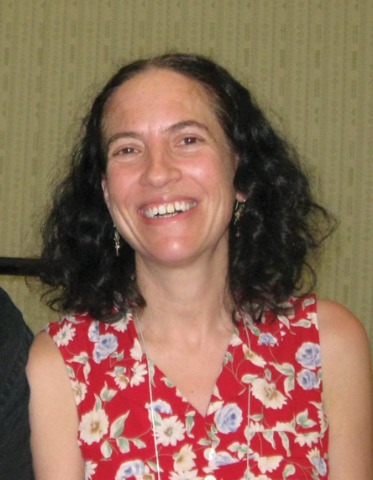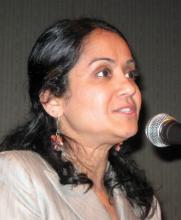HONOLULU – Results of five diverse studies on the risk of progressive multifocal leukoencephalopathy when using natalizumab to treat multiple sclerosis could change the way clinicians decide how to manage these patients.
In one of five presentations about natalizumab (Tysabri) that were given during one session at the annual meeting of the American Academy of Neurology, researchers confirmed that the presence of anti-JC virus (JCV) antibodies always precedes development of progressive multifocal leukoencephalopathy (PML). As a part of their study, the investigators developed a new assay to identify antibody-negative patients who could be at lower risk for PML when taking natalizumab. Another study looked at using serum natalizumab concentrations to predict the risk of PML.
A separate study found that earlier diagnosis of PML after symptom onset was associated with increased survival. A case presentation of PML presenting only with subacute amotivational syndrome raised questions about the need for more frequent brain MRIs. Another study confirmed that a history of taking an immunosuppressant medication at any point prior to taking natalizumab increased the risk for PML.
Antibodies Precede PML
In samples taken from four large clinical treatment trials, approximately 55% of patients with multiple sclerosis had anti-JCV antibodies, Dr. Meena Subramanyam said. (JCV infection is necessary for the development of PML.) In comparison, anti-JCV antibodies were detected in the blood of 100% of 25 patients who later were diagnosed with PML and from 100% of 39 patients with samples taken at or around the time of PML diagnosis.
"This shows that the PML patients were exposed to the virus prior to natalizumab treatment," Dr. Subramanyam said. She and her associates hold stock in and are employees of Biogen Idec, which comarkets Tysabri with Elan Pharmaceuticals.
In 17 of the 25 patients with blood samples prior to PML diagnosis, additional samples were taken after starting natalizumab. Another 39 patients had samples taken at the time of PML diagnosis or soon after. All were positive for anti-JCV antibodies. Treatment of PML for 17-98 months did not affect anti-JCV antibody positivity, though overall antibody levels fell.
The investigators used a unique two-step enzyme-linked immunosorbent assay to detect antibodies. Biogen Idec and Elan Pharmaceuticals plan to make the assay commercially available in Europe in May 2011 and in the United States soon after that, Dr. Subramanyam said.
Large clinical studies are ongoing to test the utility of anti-JCV antibody status for stratifying the risk of PML in patients given natalizumab for multiple sclerosis.
Serum Concentration Predicts Risk
The risk for PML increases after 2 years or more of natalizumab use, previous data show. A new study of biochemical samples from 207 patients on natalizumab for multiple sclerosis found that plasma concentrations of the drug increase over time, peaking after 20 months of therapy, reported Dr. John F. Foley of the Rocky Mountain Multiple Sclerosis Clinic, Salt Lake City, and his associates.
For comparison, they looked at data from two phase III trials of natalizumab, in which they also found longitudinal increases in mean natalizumab concentrations.
In the current study, samples taken in each 28- to 30-day infusion interval showed a mean 56% increase in drug concentrations over 45 months. In the Natalizumab Safety and Efficacy in Relapsing Remitting Multiple Sclerosis (AFFIRM) trial, serum concentrations increased 70% over 30 months. In the Safety and Efficacy of Natalizumab in Combination With Interferon Beta-1a in Patients With Relapsing Remitting Multiple Sclerosis (SENTINEL) trial, drug concentrations increased 99% over 30 months.
Theoretically, if elevated natalizumab concentrations are found to be associated with elevated risk for PML, it may be possible to make kinetic manipulations by changing dosing or adjusting infusion intervals to lower the risk for PML, Dr. Foley said. Studies are ongoing to explore this hypothesis.
Higher Survival With Early Diagnosis
Postmarketing data since November 2004 show that 78,800 patients worldwide have taken natalizumab and 102 of these patients developed PML. A study of the first 79 cases of PML found that 63 (80%) were alive in December 2010. Follow-up visits with these survivors ranged from 1 to 29 months since PML diagnosis. In the 16 patients who died, the time from diagnosis to death ranged from 1 to 11 months, reported Dr. Patrick Vermersch of the University of Lille (France) and his associates.
In all cases, natalizumab was stopped when signs or symptoms suggesting PML appeared, and most patients were treated by plasma exchange or immunoadsorption to rapidly remove the drug from circulation.
Compared with the patients who died, survivors were younger when diagnosed with PML, had a shorter time from symptom onset to diagnosis of PML, and had more localized disease on brain MRI. The likelihood of survival was not affected by the duration of natalizumab use or prior use of immunosuppressive therapy.





